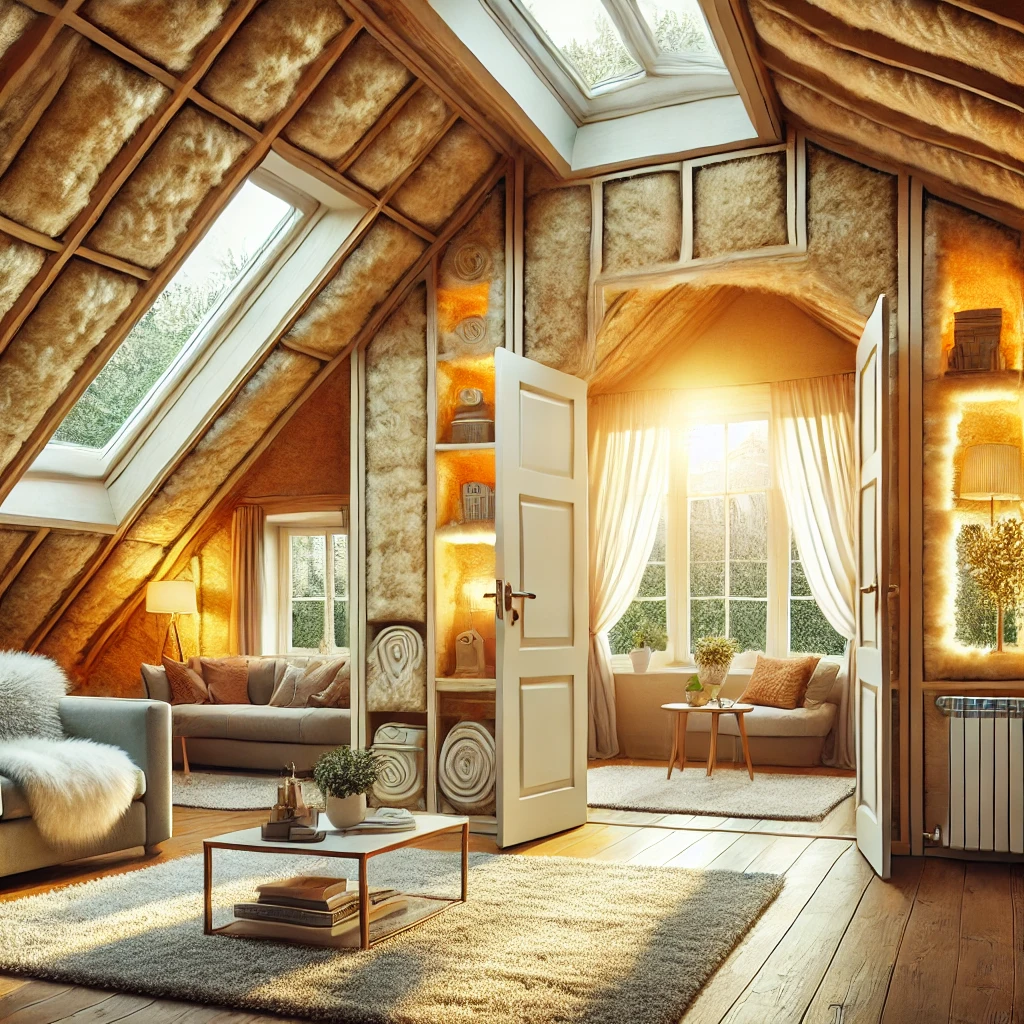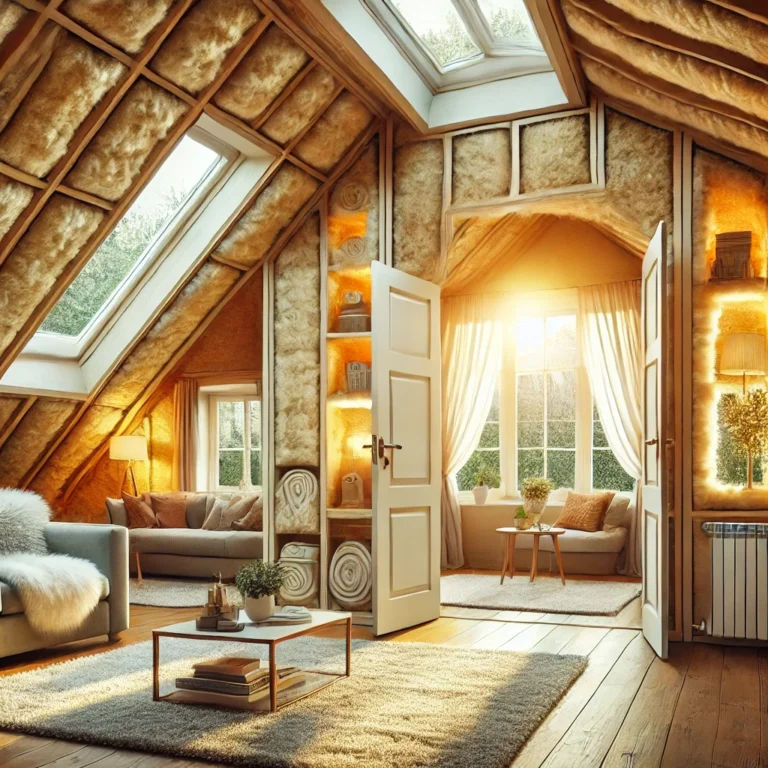Physical Address
304 North Cardinal St.
Dorchester Center, MA 02124
Physical Address
304 North Cardinal St.
Dorchester Center, MA 02124


Have you ever wondered how much energy is lost through poor insulation? A well-insulated home is not only more comfortable year-round but also more energy-efficient, helping to reduce heating costs and your carbon footprint. In this guide, we’ll explore the best ways to insulate your home, with practical, accessible tips to help you save energy and make sustainable choices that suit your climate and budget.
Heating and cooling make up a significant portion of household energy use, and without adequate insulation, much of that energy is wasted. According to the U.S. Department of Energy, proper insulation can reduce energy bills by up to 20%. Insulation prevents warm air from escaping in winter and keeps your home cool in summer, creating a more comfortable living environment and lowering energy consumption.
With rising energy costs and increasing awareness about climate change, insulating your home is a practical, eco-friendly way to save both money and resources.
Since heat rises, the attic is one of the primary areas where energy can be lost. Adding or improving attic insulation is one of the most effective ways to boost energy efficiency. Blown-in cellulose or fiberglass batt insulation are popular choices for attic spaces. If you live in a colder climate, consider increasing the insulation thickness for maximum heat retention.
Example Tip: Many experts recommend aiming for around 10-14 inches of insulation in the attic for optimal energy savings.
Even the best insulation won’t be effective if there are gaps around windows, doors, and other openings. Sealing these leaks prevents drafts and keeps conditioned air inside your home. Weatherstripping and caulking are simple, affordable solutions for sealing gaps, and they’re widely available in hardware stores.
Example Tip: Check areas around windows, doors, and where pipes or electrical wiring enters the house. Sealing these spots can help you retain up to 20% more energy.
In many homes, exterior walls are a significant source of energy loss. Adding insulation to walls can make a huge difference, especially in older homes. Depending on your wall type, insulation options include blown-in cellulose, spray foam, or fiberglass batt insulation. While wall insulation can be a more involved project, it’s worth considering for long-term savings.
For homes with cavity walls, blown-in insulation can fill the empty spaces, providing excellent thermal resistance. In other cases, a layer of exterior insulation can be added to the outside of the building before applying new siding.
Windows and doors are common culprits of heat loss, and upgrading to energy-efficient models can reduce energy waste. Double-glazed or triple-glazed windows provide better insulation than single-pane windows. For doors, insulated fiberglass or steel doors offer superior thermal resistance.
Example Tip: If replacing windows isn’t an option, consider installing thermal curtains to add an extra layer of insulation.
For more guidance on energy-efficient windows, check out ENERGY STAR’s guide.
Insulated curtains and blinds can add an extra layer of insulation to your windows, reducing heat loss in winter and blocking heat in summer. These treatments are a cost-effective way to improve insulation, especially if you live in a region with extreme temperatures.
Look for thermal or blackout curtains, which are designed to insulate windows, keeping rooms warmer or cooler without additional heating or cooling.
The best insulation material depends on factors like your climate, budget, and the area you’re insulating. Here’s a quick overview of some popular eco-friendly insulation materials:
Made from recycled paper products, cellulose insulation is an eco-friendly option that’s also highly effective. It’s often treated with borate to make it fire-resistant and provides excellent thermal resistance.
Fiberglass is one of the most commonly used insulation materials. Although it’s not made from renewable materials, it has a high R-value (resistance to heat flow) and is often produced with recycled glass content.
Spray foam insulation expands to fill gaps, making it ideal for hard-to-reach areas or spaces that need air sealing. However, it can be more expensive and is typically made from non-renewable materials.
Sheep wool insulation is natural, renewable, and has excellent insulating properties. It’s effective at absorbing moisture without losing its insulating properties, making it a good choice for areas with humidity.
If you live in a hot climate, reflective or radiant barriers can be beneficial. These materials reflect heat rather than absorbing it, helping to keep homes cooler without needing as much air conditioning.
Emma, a homeowner in Canada, wanted to reduce her heating bills in the winter. She decided to add insulation to her attic and seal gaps around her windows and doors. By making these upgrades, Emma noticed a significant improvement in her home’s warmth during winter, reducing her energy bills by around 15%. This eco-friendly approach to insulation made her home more comfortable and energy-efficient year-round.
At EcoTipsEveryday, we’re inspired by stories like Emma’s. Insulating your home doesn’t have to be a massive project to make a noticeable difference in comfort and cost savings.
Effective insulation is one of the best ways to save energy, reduce heating costs, and lower your environmental impact. By focusing on areas like the attic, walls, and windows, and choosing the right insulation materials, you can create a comfortable, energy-efficient home that benefits both you and the planet.
Question for You:
Have you tried insulating your home or sealing gaps to improve energy efficiency? What techniques worked best for you? Share your tips in the comments, and explore our other articles for more sustainable home improvement ideas.
Together, let’s make small, impactful changes to create more sustainable, energy-efficient homes that benefit both our wallets and the environment!